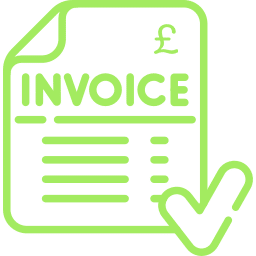In order for your business to grow, it is likely that at some stage asset finance will be offered. So why should you choose it and when is it better than traditional bank lending? This guide is everything you need to know about using asset finance to grow your business.
To make it easier to find what you are looking for we’ve separated this guide into five sections:
1. What is asset finance?
2. When is asset finance the right finance?
3. Asset finance vs traditional bank lending
4. Applying for asset finance
5. Using asset finance to grow your business
According to the ABFA (Asset Based Finance Association), there are six industries in which asset-based finance is pivotal in developing growth and expansion opportunities: Construction, Transport, Manufacturing, Distribution, Services and Retail.
If your business is one of these, asset finance can help boost cash flow and allow you to take control of your business expenditure.
What Is Asset Finance?

Do you know what your commercial finance options are? There are so many different borrowing options and platforms, many UK companies are still unsure what options are actually available to them.
Asset finance is one of the most accessible and flexible forms of finance, with solutions covering all industry sectors and businesses.
It is a form of leasing arrangement between you and a leasing company where instead of buying equipment outright, you enter into a hire agreement. You will hire equipment and pay an agreed monthly sum for a period of time that is usually between 1-5 years.
There is an extensive range of asset finance solutions available. They are used to describe a wide range of products that can provide funding against physical assets being supplied such as plants, equipment, vehicles, technology and machinery.
Choosing a specialist lender (one that operates in your industry sector) offers the benefit of being able to get advice in regards to your particular business asset-use. This can result in better uses for your equipment, or the realisation of alternative income streams.
Firstly, let’s be clear on what asset finance is not, it definitely isn’t a last chance finance option. Most businesses that can get business loan finance still prefer to apply for asset finance because it provides much more flexibility.
A flexible form of finance
When a business requires capital to fund purchases, explore growth opportunities or pay suppliers – asset finance solutions are available:
- For SMEs who constantly battle with rising costs, asset finance helps spread purchases into a manageable size.
- To enable quicker decision times from lenders, which mean quicker delivery of machinery, vehicles and equipment.
- That allow payment terms to be spread over short, long or extended terms and can be negotiated and amended whilst still in contract.
SMEs find asset finance suitable because it allows them to get hold of the equipment they need in order to operate, trade, and grow without having to access lines of secured or unsecured credit elsewhere. Payments are also made over a fixed period of time, making it easy to manage in terms of budget planning.
When Asset Finance Is The Right Finance
News reports about the economy can be confusing, and it doesn’t always apply to an individual’s unique business circumstance.
If your business is looking for a cash injection or looking to expand, you may find the EU uncertainty, interest rate rises and rumours of another downturn might be putting you off. Yet there are many businesses that still rely on external investments, regardless of the wider economic situation.
Most will approach their bank first, but there are plenty of reasons not to; applications process, conservative lending policy, and high-interest rates are just the start.
However, asset finance solutions have the ability to help nearly all businesses. Here are some situations you might be familiar with, where accessing commercial asset finance is the right call to make:
To Save Money
Asset or rental leasing means you only pay the value of the asset during its useable life. You don’t pay an upfront premium for your new machinery/technology, which means you can generate immediate returns.
For Financial Control
Commercial asset finance allows you to maintain control over your monthly expenditure, so you can keep track of your costs.
Inbuilt Risk Management
Tech industries have fast-moving technology requirements and asset leasing them means removing the risks of them becoming obsolete. This enabled you to upgrade and react to your business environment quicker.
For Quick Decisions
Asset finance deals can be made quickly, meaning you can identify what suits your company best and move with minimal delay. Assets come with security attached, so acceptance is always easier.
For Tax Savings
Using commercial asset finance can help with your tax bill. All lease payments are categorised as expenses and are fully deductible from your profits for corporation tax purposes.
You Need Working Capital
Any cash reserves are protected and maintained as the equipment isn’t paid for in one lump sum, leaving cash for growth or other opportunities.
You Are Risk Averse
Business can be volatile, if there is any chance of defaulting on your asset finance agreement, you will only lose the asset and won’t be personally liable or your home at risk.
So if you want to release cash from your assets, buy or replace assets, start a new business, then commercial asset finance could work for you.
Asset Finance vs Traditional Bank Lending

Small businesses wanting growth will invariably seek an unsecured bank loan. If you don’t qualify for one, then where do you go?
Unsecured loans are the least costly form of borrowing, but many small businesses can’t get accepted by traditional bank lenders due to:
- Not having a long enough track record
- Not having a high enough credit rating
- Not having a convincing enough business plan
It means a significant number of businesses are being turned down for loans, which jeopardises chances of further growth.
Asset finance is a viable alternative source of lending and unlike bank loans, it’s already got security attached.
Traditional bank lending is usually calculated by looking at your current and future cash flow. This may include putting your operations up for scrutiny, while asset finance is based only on the asset you put up for finance.
For traditional lending, the criteria and application process can be lengthy. They can entail application forms, meetings with the bank, discussing payment terms, and interest rates and analysing business performance past, present and future.
Even banks themselves are becoming increasingly reluctant to arrange loans and lend to small businesses. This trend has grown to such a point that some SMEs don’t even consider the option of arranging a business loan with their bank at all.
With traditional lending focused heavily on their own internal lending criteria, asset finance providers can provide ongoing liquidity through a number of asset-based lending streams. Whether it is a company’s working capital i.e., their balance sheet, or through purchasing on a lease basis and freeing up cash flow.
The reason many small businesses are choosing to use asset finance as their first lending option, and not traditional lending is two-fold.
– Lengthy and often tiresome hoops that need to be jumped through to satisfy bank criteria
-The flexibility and speed offered by asset finance providers.
How To Apply For Asset Finance

Make sure you know what kind of asset finance you need, so you can prepare all your information for a successful application.
While asset finance is viewed as safer due to the inherited security of the asset being financed, it’s still important to ensure that all your finances are presented clearly when applying.
Identify exactly what your business needs
Depending on your business needs and whether it is a start-up, expanding or needing to free up cash will dictate the type of finance. It could be invoice finance, bridging finance, merchant cash advance, bank loans or asset finance.
Look at more than one asset provider
While some types of equipment can be provided by multiple lenders, other specialist machinery might only be offered by a few. Always make sure you do your homework, consulting and comparing with what each provider offers.
Provide as much information as possible
Lending criteria, especially asset lending have toughened up. Ensure that you include (in addition to the standard asset finance box-ticking) any additional details that might be required including:
– Company details
– Industry particulars
– Business figures including customers and turnover
– Asset particulars
– Proposed asset use
– Term expectations
– Payment expectations
– Financial health
– Recent bank statements
– Company performance history
– Details of existing finance agreements
– Forecasts based on successful asset finance.
Finally…Read the small print
As with any other financial agreement, asset finance comes with plenty of small print. Financial products love to be wrapped up in cosy layers of financial jargon. Always ask questions to make sure you understand exactly what is involved when you sign.
Lenders are far less likely to approve an application if they have to second guess your suitability and creditworthiness because of omissions on your application.
Using Asset Finance To Grow Your Business
Asset finance is one of the best ways you can channel investment into your business, while still maintaining cash flow. Asset finance can save your company money, which means more investment money available to grow your business elsewhere.
Asset finance for start-ups
If you’re a start-up or new business, you’ll want to be able to buy the equipment or the machinery needed to operate successfully. Asset finance helps by offering hire purchase or leasing where purchase payments are broken down into affordable monthly sums. It’s a tactic that most start-ups utilise due to the security of the finance.
Using existing business assets to raise capital
You can use asset finance to purchase or borrow against any ‘fixed asset’ you own i.e., your computers, equipment, vehicles, technology, plant, machinery and furniture.
Anything can be held as security by the finance provider against the loan. Asset finance doesn’t include stock, although you can use the benefits of asset-based lending to purchase more stock and fulfil more customer orders- fuelling growth and boosting cash flow.
Asset-based lending when factoring is limited
Despite being one of the most convenient ways in which to access cash from unpaid invoices, invoice finance can still limit your options to improve business growth. Delayed payments and seasonally slow sales can affect your cash flow.
You may also be in a tricky situation where you are making enough to generate more sales but need extra funding in order to make them. Using one of your assets, you can secure a loan against it and then pay it back with interest.
Asset finance for short-term growth
If you are looking for a quick decision or need to take advantage of industry opportunities, then asset finance, like invoice finance or asset-based lending, are forms of finance agreed quicker than traditional loans. New facilities can be set up in just a few days and you can start releasing cash flow immediately.
For asset-based loans, finance providers are often specialists in your field that can provide you with specialist advice. They can see your wider industry and the opportunities within it when basing their lending limits.
How asset finance can save on tax
Using asset finance to lease machinery, equipment or vehicles can also be a handy tax-saving procedure. All your lease payments can be offset against your profits, as they are seen as business expenses.
Buying outright means you can only write down for depreciation and loan interest, this can often be less than your lease payments. Remember VAT is payable on the rental, not the purchase price, which can also help cash flow.
Asset finance can be a useful financial product at every stage of business growth. It is a flexible form of finance and has more tangible benefits than traditional bank lending. If you get your application right, it can be one of the quickest forms of funding options available to you. It is also able to provide benefits such as freeing up cash flow, without needing additional security.
The size of the finance can vary from £1,000 to £100,000 and comes with tax and maintenance benefits.
Asset finance is one of the most popular forms of finance in the UK.
If you aren’t using it, if you’re looking for a better deal or want to learn more about our finance packages – contact us today or request a call back here for a free, no obligation chat with a member of our team!






















